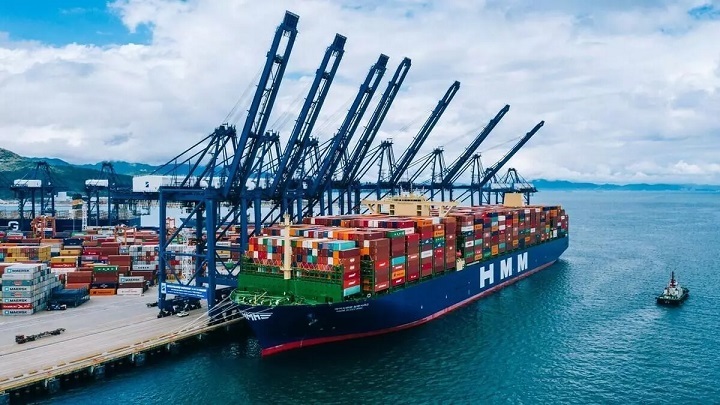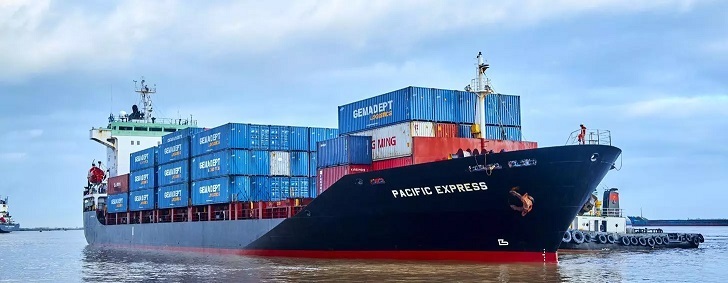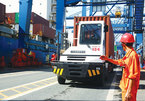 |
|
|
Cao Nguyen Binh Phuoc Co., Ltd specializes in producing coal pellets and compressed rods for export to the US and West Asia. In June 2020, the company paid US$4,500 for each 40-foot container to the US and $1,100 to Saudi Arabia. In November 2020, the charges doubled and have continued to increase sharply in 2021. Currently, it has to pay up to $13,800 for a 40-foot container exported to the US and $5,800 to Saudi Arabia.
The company’s manager Nguyen Thi Cam Hang said that the freight rates not only have sharply increased but sometimes businesses could not hire a ship, even though they were ready to pay shipping rates three times higher than last year. If this situation continues, it will be difficult for Vietnamese exporters because customers will choose a closer market.
This is the common situation of Vietnamese exporters at present. Cargo shipping charges are rising to the highest level in history and keep increasing. It is forecast that freight will be up to $20,000 for a 40-foot container to Europe. This greatly affects the export of Vietnamese agricultural products when export goods are of low value, while freight is high and the selling price cannot increase accordingly.
Many companies are considering whether they should keep exporting goods. If going forward, there is no profit, even losses. If they stop, they will lose their market.
Exports hit hard by higher charges and fees
 |
|
|
According to the Vietnam Logistics Association, exporters are suffering from the weekly-increasing freight rates. For 40-foot refrigerated containers shipped to the US, the freight rose from about $7,500 in April 2021 to $20,000 at present. Container freight from Vietnam to some seaports in Russia has increased to $5,000-6,000.
In addition, each shipping line imposes three to five types of surcharges such as loading and unloading fees at the port, container cleaning, documents, lead clamps... These surcharges are set by shipping lines themselves without having an agreement with clients.
According to the Vietnam Maritime Administration, as the domestic fleet is not capable of exploiting freight routes to Europe and North America, the entire market share is dominated by foreign shipping lines. Currently, 38 foreign shipping lines hold 95% of Vietnam's import and export freight transport market.
At a recent dialogue with shipping lines, many businesses were upset about shipping lines raising charges too much and too quickly. Information about freight rates is unclear and other problems. Shipping lines only said that the prices follow market mechanisms and are regulated by supply and demand. This explanation made businesses even more frustrated.
The Vietnam Logistics Association also said that there is a big difference in prices between shipping lines. For a 40-foot container going to New York, the freight rate is $8,500 or more than $10,000 for different shipping lines. The Premium package costs up to $14,000 and Diamond package costs up to nearly $20,000.
The price of oil has not increased and the export demand has not increased, so why is the freight rate so high? Why is there a big difference between shipping lines and packages? Besides, carriers collect surcharges, and apply the USD exchange rate of their own, not based on the rate of the State Bank of Vietnam.
According to businesses, the Covid-19 epidemic has made it difficult for them to maintain production and ensure on-time delivery. The higher transportation cost is "another hit".
Meanwhile, the financial statements of major shipping lines in the world in the first quarter of 2021 showed that revenue and profit both increased enormously. Specifically, by the end of the first quarter of 2021, Cosco's revenue increased by 80%, equivalent to $9.87 billion, and profit up by 26 times over the same period last year, reaching $2.71 billion. Maersk’s revenue was $12.4 billion and net profit was $3.1 billion. Evergreen’s revenue increased by 35%, estimated at $2.27 billion, net profit of $567.13 million.
Photo: Businesses need to work together and negotiate with shipping lines to get better prices. According to the Vietnam Food Association, some rice exporters plan to stop signing new contracts because they cannot guarantee the costs incurred due to the epidemic, plus the high container rental rates.
Exporters of agricultural products and handicrafts said that logistics charges have been out of control. If the value of the goods inside the container is worth $30,000 and the exporter has to pay up to $11,000 to export it, there will be no profit. They therefore are considering whether to continue or stop exports.
According to the Vietnam Pepper Association, many partners in the US and EU have switched to buying pepper from Brazil because the quality of pepper is not too different from that of Vietnam, while the shipping cost is only one-third compared to Vietnam. Vietnamese pepper is in danger of completely losing the US and European markets.
According to the General Statistics Office, the total import and export value of Vietnam's goods in the first seven months of 2021 reached more than $371 billion, up 29.5% year on year.
The second half of the year is the peak season for exports from Asia to North America and Europe. Some shipping lines have started to apply peak season surcharges for these service lines. It is forecast that container freight rates will remain high and may increase further in the fourth quarter of 2021. This will cause more difficulties for Vietnamese exports. The risk of supply chain disruption is always present if freight rates remain high.
A representative of the Vietnam Chamber of Commerce and Industry (VCCI) said that the electricity and telecommunications industries all reduced prices, demonstrating business ethics of big firms amid the epidemic to share difficulties with local businesses. It is unacceptable to see chaos in the sea shipping market.
The Vietnam Maritime Administration said that it would establish an inspection team to solve the situation. In addition, the current regulations on sea transportation are no longer appropriate, which need to be amended.
Businesses also need to group up to negotiate with shipping lines to get better prices and this requires the role of associations. Vu Tien Loc, Chairman of VCCI, said that with the current import and export scale, it is time for Vietnam to have a position in negotiations.
Tran Thuy

Foreign ocean carriers call shots on freight costs
The domination of foreign ocean carriers and intermediate parties has been causing chaos in seaborne-freight costs, driving exporters and manufacturers into deadlock.

Shipping companies enjoy positive earnings thanks to high sea freight rates
Record-high sea freight rates have seen shipping companies produce positive second-quarter earnings reports.